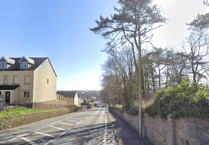The bluestone monoliths incorporated into the famous prehistoric monument of Stonehenge did not come from a “giant lost circle” at Waun Mawn in West Wales. That is the conclusion reached in new research published today in the international “Holocene” journal.
Researcher Dr Brian John, who lives just 3km away from the site in question, has examined the evidence associated with the claim that around 5,000 years ago scores of bluestones were incorporated into a massive stone setting on a bleak moorland hillside in the Preseli mountains. He finds that the field evidence does not withstand scrutiny. Nor does he find any evidence to support the hypothesis that the stones were later dismantled by our Neolithic ancestors and moved cross country to be reassembled on the chalk-lands of Salisbury Plain.
The narrative of bluestone quarrying, temporary placement at Waun Mawn and human transport to Stonehenge has been developed over the past decade by Professor Mike Parker Pearson of University College London and a team of archaeologists and geologists. Excavations have been concentrated at two “quarrying” sites and also at Waun Mawn, where digs were conducted on common land in the years 2017, 2018 and 2021. Scores of papers have been published by the team, and their narrative has been widely publicised in the media, including TV documentaries.
At present there is only one standing stone on the Waun Mawn site, with three recumbent stones in a rough alignment. Dr John claims that it is fanciful in the extreme to interpret this rough stone setting as the last remnant of one of the biggest stone circles in the British Isles. He has examined most of the supposed empty “stone sockets”, and concludes that they are entirely natural pits and hollows in a surface of undulating glacial and periglacial deposits.
He finds no evidence of a circular arrangement. He also disputes the idea that monoliths of rhyolite and spotted dolerite from the supposed “quarries” of Rhosyfelin and Carn Goedog were brought to Waun Mawn, and he sees no evidence that these stones were deemed sacred or special in any way. He says that all of the stones currently found at Waun Mawn have come from local outcrops of rock and from a scatter of glacial erratics. Further, he disputes the idea that one of the stone sockets was a precise “fit” for one of the standing bluestones at Stonehenge.
Dr John says: “The conclusion must be that Waun Mawn had nothing at all to do with Stonehenge. There were no stone quarries in the vicinity, and there was no lost stone circle. Unfortunately, the archaeologists have been swayed by the false premise that the Stonehenge bluestones (from many different sources) cannot possibly have been transported by glacier ice; and on that basis they have developed a highly complicated ruling hypothesis of bluestone extraction and use whilst ignoring the very flimsy nature of their own evidence.”
In the newly published article, Dr John points out that in the Neolithic and Bronze Age landscape of West Wales there is no evidence of spotted dolerite and rhyolite bluestones being used preferentially in megalithic structures. He also notes that in their latest publications Prof Parker Pearson and his team have accepted that many of their assumptions about bluestone extraction and use in West Wales need to be revised.




